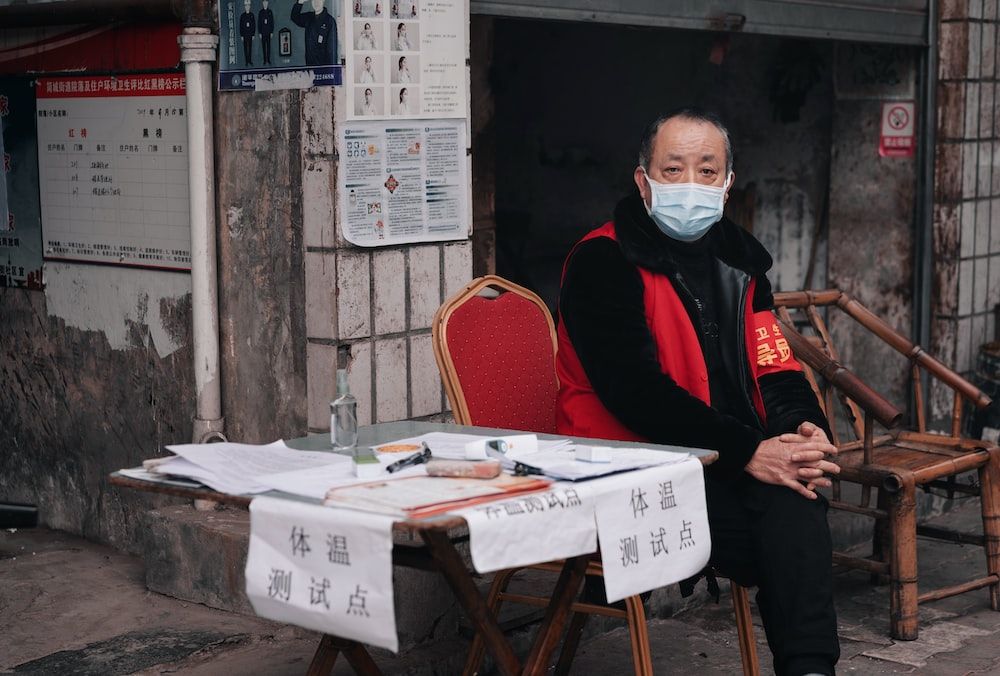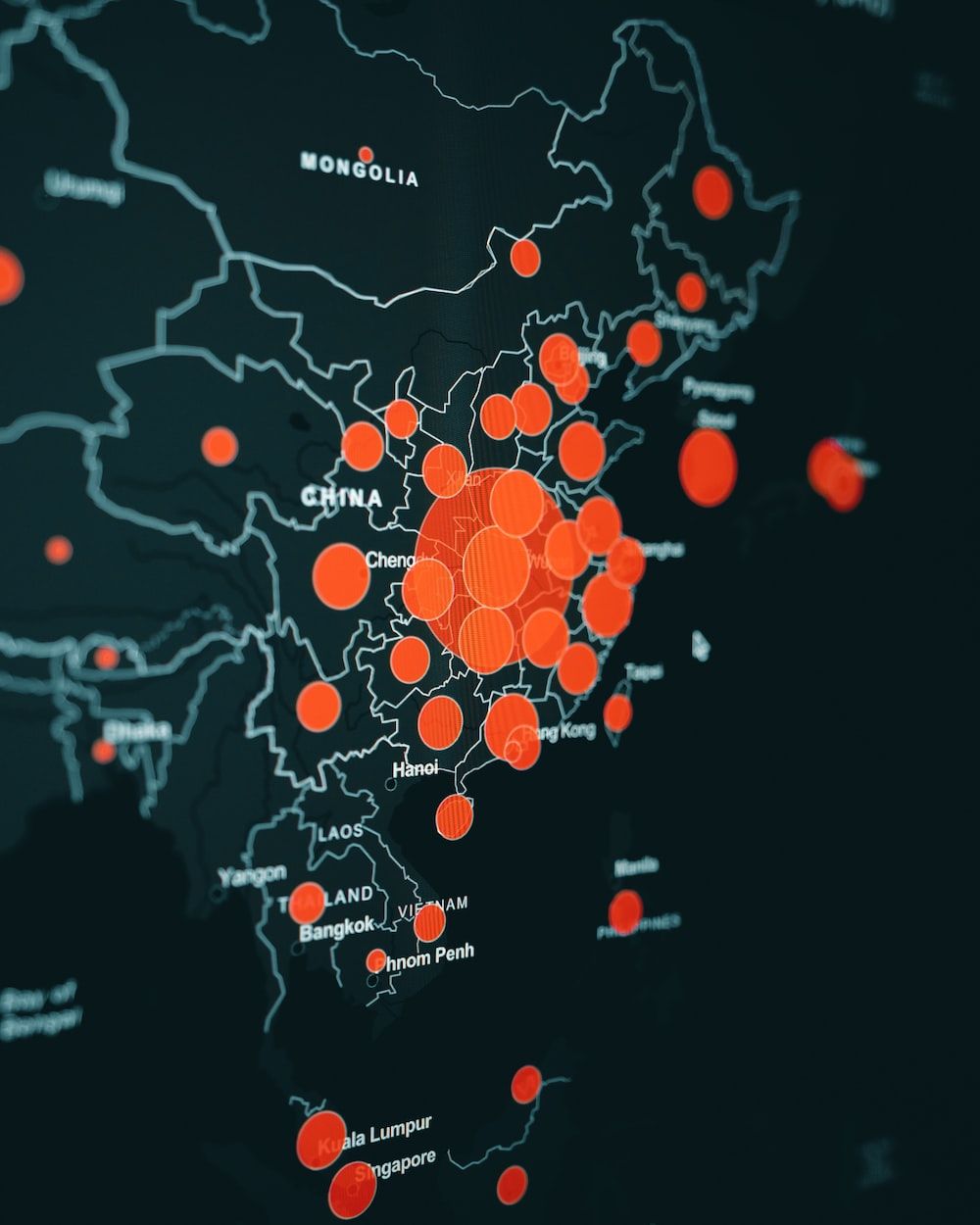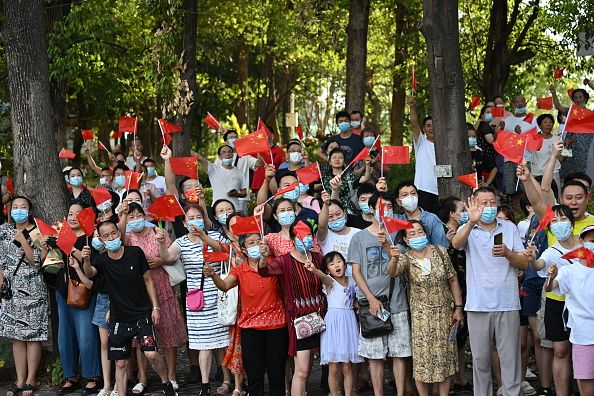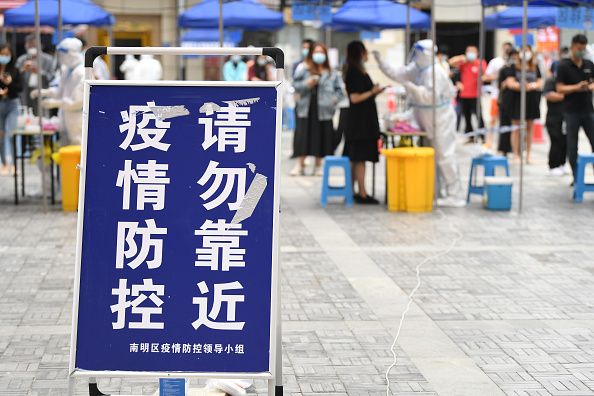
澳門90後|社會科學碩士|財經媒體|澳門研究| 生活瑣事
Grid management: a new strategy for grass-roots social governance in China? |Submission #11
Author: Yun Beike (PhD in Political Science)
Now that the new crown epidemic has entered its third year, all parts of the world have generally explored a set of methods suitable for them to deal with the epidemic. With the end of the epidemic in Shanghai, China has become one of the few countries or regions that still insist on "clearing".
There have been many discussions about China's epidemic prevention model in recent years. One of the points that is often mentioned is its strong grassroots mobilization ability. When the epidemic broke out, the National Health and Health Commission instructed all streets, towns and villages across the country. Implement grid management, mobilize community grid personnel and other grassroots forces to participate in epidemic prevention, and reports on grid personnel going door-to-door to deliver supplies and nucleic acid tests to residents who are isolated at home have also become typical official epidemic prevention narratives.

However, when a certain city enters a state of closure, it is often seen on social media that some supplies are cut off in the banned communities. Therefore, under such contradictions, what is the best way to manage the grid? How is it implemented at the grassroots level? It's worth looking into.
What is "Grid Management"?
Before introducing grid management, we must first introduce the administrative divisions of the Chinese government.
As shown in the figure below, taking prefecture-level cities as an example, there are currently 293 prefecture-level cities in China. Below each prefecture-level city, there are generally counties or districts, and further down are towns and streets. Townships are the most basic level in China. Administrative units have people’s congresses at the same level, and the streets are only the dispatched offices of the district government. Further down is the village and the community. In name, the village committee responsible for village affairs and the neighborhood committee responsible for community affairs are both grassroots self-governance. Organizations whose members are elected by villagers or residents, but both still undertake the arduous tasks assigned from above, and are the agents of the state to govern the grassroots society.

With the continuous development of China's economy, the urban population continues to increase, and the mobility is high, resulting in many social problems. China's administrative system is fragmented, and the coordination between departments is not smooth, making it difficult to cope with the increasingly complex situation.
In this context, in 2004, Dongcheng District, Beijing took the lead in implementing the grid management model. Under the existing streets and communities, this district took 10,000 square meters as the basic unit and used geocoding technology to divide a total of 1593 A small grid, with 350 city management supervisors responsible for full-time monitoring, was trying to use this method to deal with community disputes and respond to public complaints. Once problems are found in the grid, they must be reported to the district command center to unify Scheduling processing, in order to solve the problem of buck-passing among various departments.
This kind of management idea has gradually been recognized by the central government. In 2010, the Central Political and Legal Committee and the Central Comprehensive Management Committee selected the first batch of 35 cities and counties as national comprehensive pilot areas for social management innovation, among which Dongcheng District, Beijing is impressively listed.

In 2013, the Third Plenary Session of the 18th Central Committee of the Communist Party of China passed the "Decision of the Central Committee of the Communist Party of China on Several Major Issues Concerning Comprehensively Deepening the Reform" , which clearly proposed to "innovate the social governance system" and "focus on grid management and social services. , improve the grass-roots comprehensive service management platform, and timely reflect and coordinate the interests of the people at all levels at all levels”, officially setting grid management as the direction of social governance innovation.
Two years later, in the "Opinions on Strengthening the Construction of the Social Security Prevention and Control System" issued by the General Office of the Central Committee of the Communist Party of China and the General Office of the State Council, the idea of grid management was also applied to maintain social security. In the following years, grid management began to be rolled out across the country. For example, Guangzhou and Beijing achieved full coverage of grid management in 2017 and 2018.
Since the implementation of grid management is a local affair, there are local practices, but the basic model is similar, that is, at the community or below the village level, according to certain standards, divide a number of small grids, which are different from those at the street and community levels. The grid center forms a three-level grid system. Through daily inspections by grid personnel, community information is collected to understand the needs of residents, to solve problems as soon as possible, or to report to superiors, striving to achieve "small things do not go out of the grid. Big things don't happen to the community."

Grid management is also linked to governance modernization in the official narrative due to its emphasis on cross-sectoral integration and the use of information technology.
Positioning and landing: two problems to be clarified
Having said so much, what exactly is grid management used to manage?
Regarding this issue, perhaps even the state has not given a clear positioning. At present, the central government has not given a unified and clear regulation on grid management, and it is entirely up to the local government to implement it according to the guiding requirements and goals given by the central government.
JC Mittelstaedt of Oxford University analyzed this issue in a paper published in China Information this year. First of all, Mittelstaedt believes that the grid management experiment in Beijing's Dongcheng District has a distinctive color of stability maintenance. Intervention to eliminate grassroots contradictions in the grid. Although the later central documents included grid management in the category of social governance and emphasized the aspect of providing public services, the 2015 "On Strengthening the Construction of Social Security Prevention and Control System" "Opinions" clearly stated that in 2020, "to achieve full coverage of grid management in the central urban areas of all counties (cities, districts, and banners) across the country". This requirement also makes local governments face unclear central orders. , tend to use grid management to maintain social stability.

Grid workers are responsible for various heavy tasks assigned by their superiors. They inspect the grid every day, collect basic grid information, report community conditions, and visit the door when necessary to understand the situation of the people, although grid workers are required to respond in a timely manner in terms of work content and assessment. The needs of the public, but its fundamental goal is to ensure that nothing happens in the grid, and to prevent small problems from turning into big problems.
In Mittelstaedt's view, there is no innovation in grid management, but the extension of the existing bureaucratic system to the grassroots level, still adopting a top-down management model, excluding public participation and self-management.
Another article published by domestic scholars Chen Nabo and Li Wei in"Sociological Research" in 2020 can also provide us with some references.
This article attempts to answer why local governments have different strategic choices when completing work tasks under the structure of fewer people and more tasks? Because the author happened to compare the three sub-district offices in the so-called Y district of city A to complete the task of building a grid management platform, we can also take a look at how grid management is implemented at the street level.

First of all, when the authors introduced the background of the case, they already explained that although the promotion of grid management is a requirement of the municipal government, neither city A nor District Y has formulated a special assessment plan, which shows that this task is not for each street. Therefore, different sub-district offices choose different coping strategies according to the degree of matching of their own tasks and resources.
Streets with relatively abundant resources are willing to take this seriously, not only recruiting grid workers with self-raised funds, but also formulating performance appraisal methods and setting up reward funds to mobilize grid workers’ enthusiasm for work. On the other hand, streets with relatively tight manpower and funds can only be passively dealt with, using existing community staff to serve as grid workers, or simply ignore them completely.
Although this is only the case of City A, we can also see from it that a lot of resources and energy are required to build grid management. If the assessment pressure from the superiors is not too great, the grassroots government has room for flexibility.
Grid Management During Epidemic Prevention: An Unexpected Success Story?
In fact, it is not difficult to imagine that the implementation of grid management requires a lot of resources to be invested in equipment and manpower. Basically, the grass-roots government is required to undertake this, and the pressure is not small. Adding another management level under the community will also extend the chain of information transmission and increase the cost of communication between different departments. Such a design may not be able to achieve the expected goal of departmental coordination.
Then why did the National Health and Medical Commission instruct at the beginning of the outbreak to implement grid management at the grassroots level? Does this approach work?

In fact, to be fair, during the epidemic prevention period, the conditions for implementing grid management have changed.
First of all, under the call of the overall situation of epidemic prevention, the implementation of epidemic prevention policies has become the central task of local governments. No one dares to neglect, and all resources must be tilted towards this area. In order to achieve the goal of "clearing" set by the central government, epidemic prevention measures must be placed on individuals. At this time, the closer the community residents are, the better the effect. Therefore, the manpower that can be mobilized in the grid to participate in epidemic prevention is the best candidate.
Mittelstaedt believes that grid management blurs the boundary between service and stability maintenance. The grid staff respond to the needs of residents, and the ultimate goal is still to maintain stability. Under the epidemic, grid staff guard the gate of the community, or go to the door to measure body temperature, deliver supplies, and conduct psychological Easing is just changing the goal from maintaining stability to zeroing.
But no matter what, the key to making the system work is not information technology or high-tech equipment, but people.

From official media reports, we can also see how the grid members sacrificed time to spend with their families and devoted themselves to the front line of epidemic prevention without hesitation.
Even if we can further divide the jurisdiction into grids, when it is actually implemented, the scope faced by a few grid members is still huge, not to mention the heavy task of epidemic prevention.
When the epidemic is not serious, other departments in the society can still operate as usual. With the cooperation of these social forces, the operation of grid management will not be so laborious, but if unfortunately faced with forced closures like Shanghai or Xi'an In the city's situation, the human resources dispatching at the grassroots level alone may not be enough.
Maybe at this time, everyone will suddenly think about the meaning of developing social power.
#Number of articles: 1️⃣3️⃣2️⃣
Reference article:
Beijing Daily, 2011, "Exploring a New Model of Gridded Social Management in Beijing's Dongcheng District" , June 2, 2011;
Beijing Dongcheng District Informatization Office, 2011. "Beijing Dongcheng District: Refined Urban Management with Gridded Work Mode", "Informatization Construction", 9: 10-12;
Guangzhou Daily, 2022, "My mother is a grid worker" , May 8, 2022;
Nanfang.com, 2020, "Guangdong divides 140,000 grids with more than 170,000 grid workers to fully implement "grid-based" epidemic prevention and control , February 11, 2020;
Yangcheng Evening News, 2022, "Longgui Street, Baiyun District, Guangzhou: Village workers and grid workers guard the "last meter" of grassroots epidemic prevention day and night" , April 14, 2022;
Like my work?
Don't forget to support or like, so I know you are with me..

在帝國邊陲講故事

四個社會科學和歷史背景的作者,嘗試訴說一座名叫「澳門」的看不見的城市。它的故事不止關乎自身,也關乎背後的帝國和邊陲。 👇我們的故事|Podcast|免費電子報|Patreon https://linktr.ee/macaology_empire
Comment…